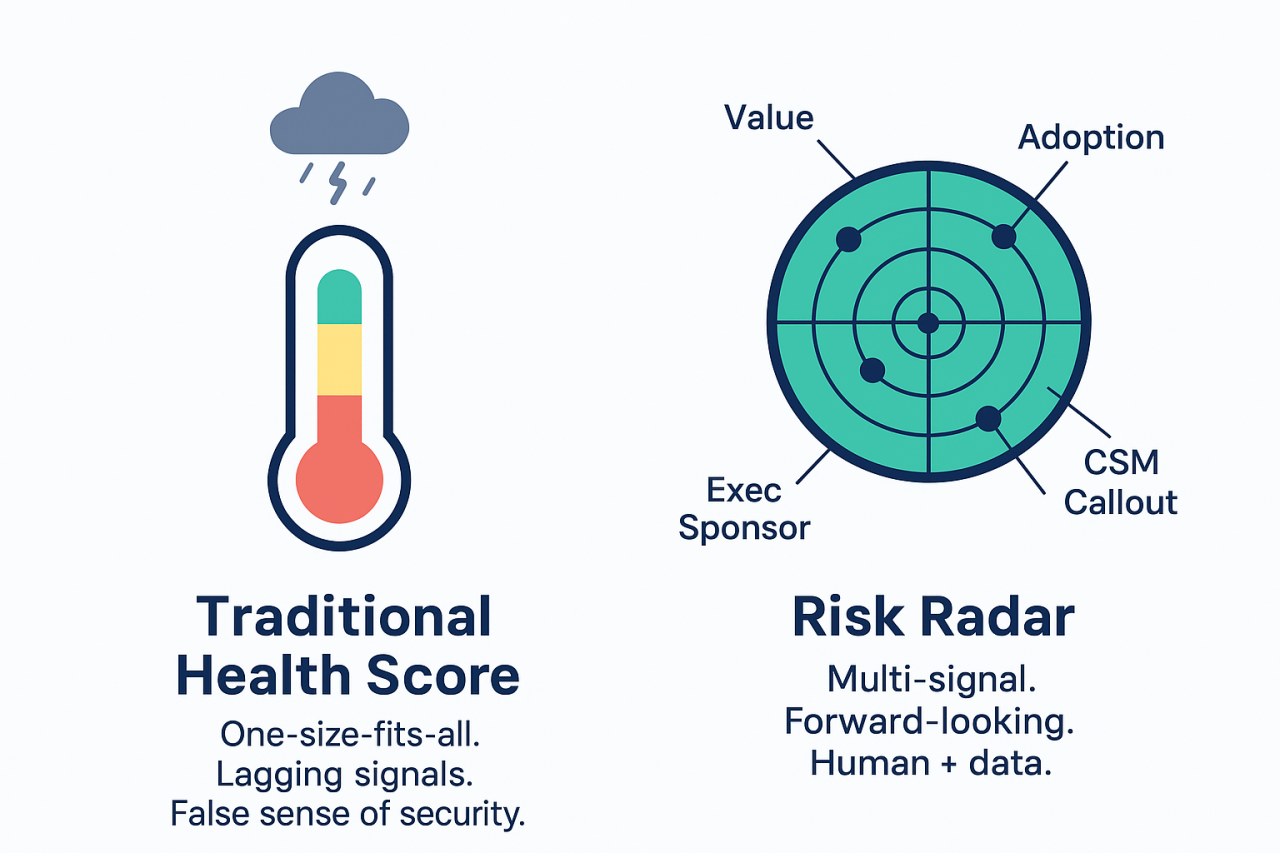Let’s be real. Health scores were supposed to be the holy grail of Customer Success. A single number on a dashboard that tells you if a customer is safe, at risk or ready to expand.
But in practice? Most health scores are broken.
I have lost count of how many times I have seen a “green” customer churn or a “red” customer happily renew. The score looked fine on paper, but the reality on the ground was different.
Why? Because most health scores are built on lagging indicators; usage trends, support tickets or NPS scores. By the time those numbers turn red, the customer has already emotionally checked out.
The problem with traditional health scores
- Too many vanity metrics. Logins and clicks do not equal value. A customer can log in every day and still question the ROI.
- They are generic. Every customer gets measured the same way, even though “healthy” looks different for a Fortune 500 enterprise vs a 10 person startup.
- They miss the human signals. Sponsor turnover, silence in QBRs or that gut feeling from a CSM who knows the account, those signals rarely make it into the formula.
I once worked with a customer who had sky high usage, green across every metric. On paper, they were our happiest account. Then the CFO changed. Within 60 days, they churned because the new exec did not see the spend justified. Our health score never saw it coming.

A smarter way to measure risk
Health is not just a number. It is a story. And like any good story, it has different chapters:
- Leading indicators: Early warning signs that something is shifting. Example: executive sponsor leaves, project scope shrinks or payment delays.
- Adoption + value metrics: Not just clicks, but whether customers are actually achieving the outcomes they bought you for.
- Engagement signals: Are they showing up for QBRs? Do they bring the right people into the room? Silence is often the loudest signal.
- CSM judgment: This is the underrated piece. A seasoned CSM’s assessment should count as much as a data point.
Think of it less like a “score” and more like a risk radar. A radar tells you where the storms might hit, not just how sunny it looks today.
Making it actionable
Here is how you can fix health measurement in your org:
- Redesign your health framework every year. Your business evolves, your metrics should too.
- Weight signals differently by segment. Enterprise renewals hinge on executive buy-in. SMB health hinges on usage.
- Build an escalation rhythm. Do not wait until the dashboard turns red. Every amber signal should trigger a proactive conversation.
- Give CSMs a voice. Create space for them to flag accounts even if the score is green.
A TSIA study found that 65% of churn is preventable if risks are flagged early, but if you are relying on a static, one-size-fits-all score, you are flying blind.
Final thought
Health scores are not useless. They just need to grow up. Stop treating them as the answer and start treating them as one piece of a bigger puzzle.
Customers do not churn because their login count dipped. They churn because they stop seeing value, lose an internal champion or face new budget pressures.
The smarter way forward is to measure risk like a radar; dynamic, multi-signal, and human-informed.
In Customer Success, it is not about predicting the weather after it rains. It is about seeing the storm before it hits.



.png)


